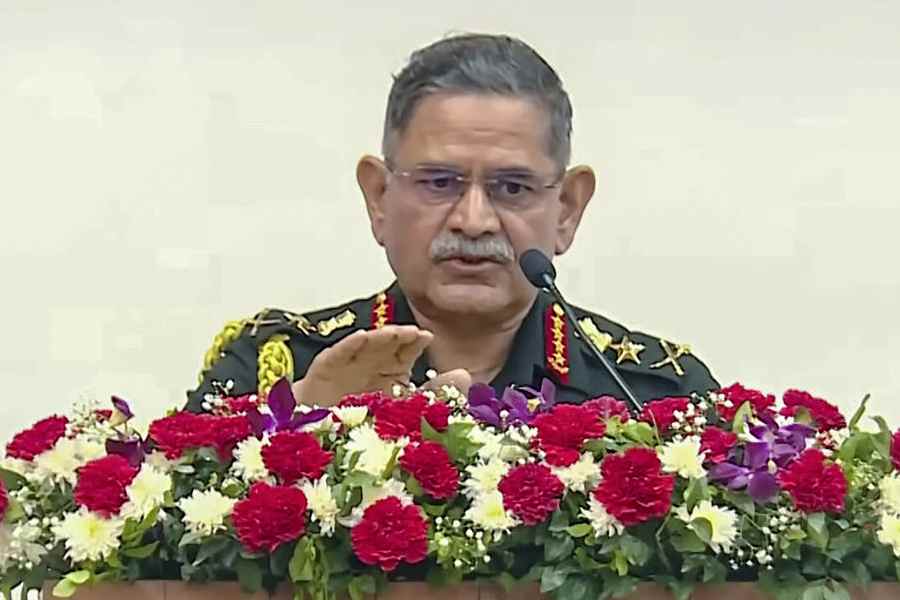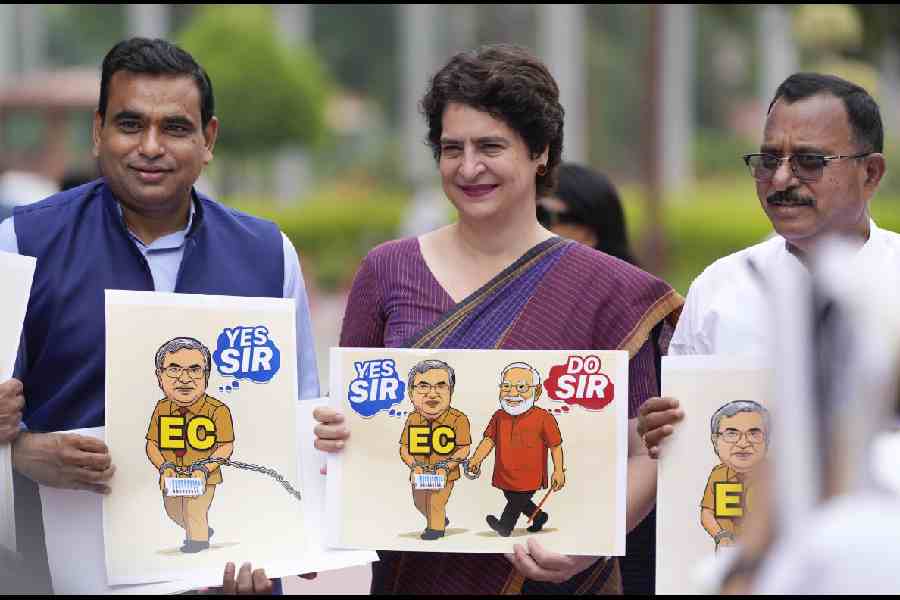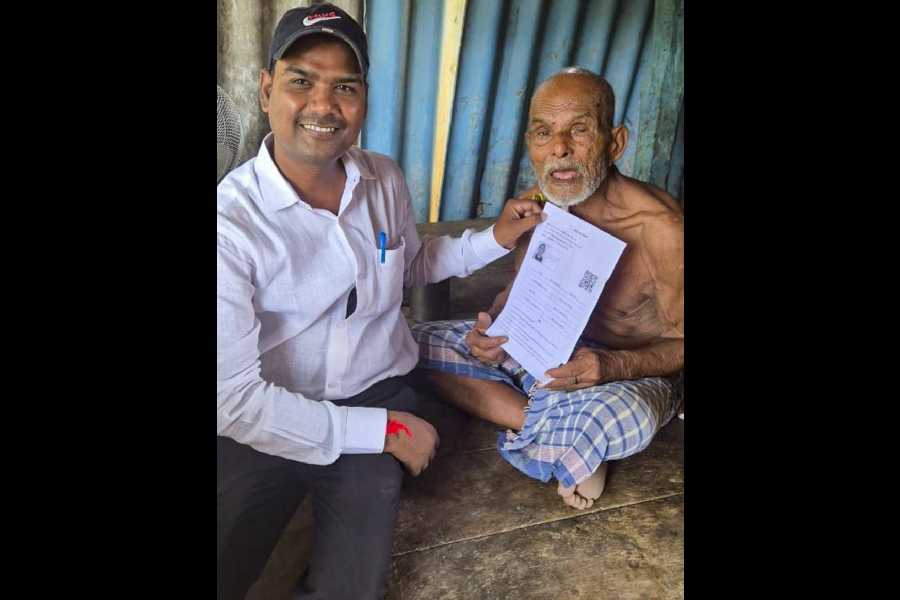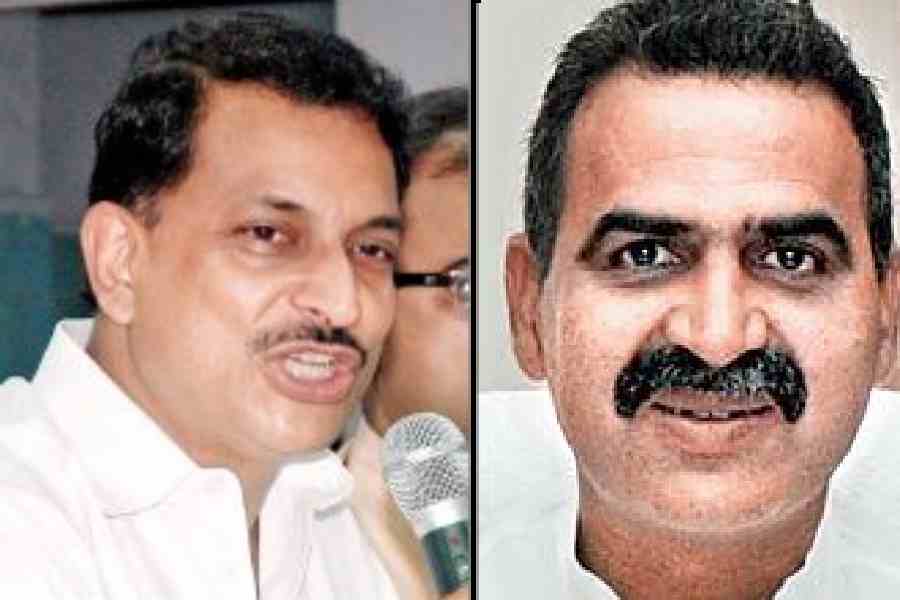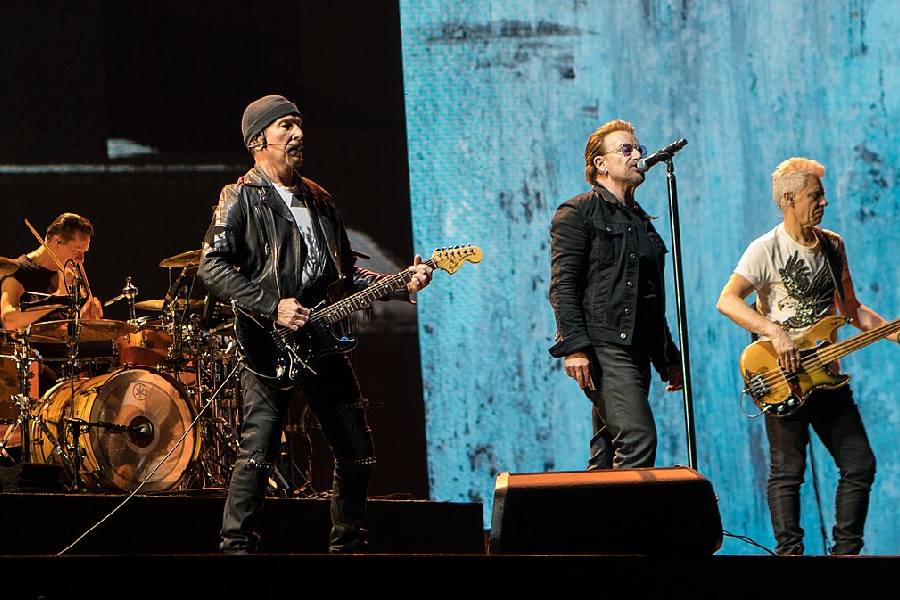 |
| intelligent treatment: Basant Kabra on stage |
Sarod player Basant Kabra’s recital at The Ramakrishna Mission Institute of Culture’s programme at the Vivekananda Hall on June 17 was a revelation. Kabra is the son of the late Damodar Lal Kabra, sarod player and nephew of the pioneer Indian classical slide guitar maestro Brij Bhushan Kabra. He was trained initially by his father and then by Indian classical music’s lady genius of mystery Annapurna Devi, the daughter of the great Ustad Allauddin Khan and former wife of Pandit Ravi Shankar.
The revelation was that we still have a first-rate representative of the sarod style created by Ustad Allauddin Khan and perpetuated by his son, the great Ustad Ali Akbar Khan. The second part of the revelation is that in the hands of interpreters like Basant Kabra this sarod style has musical meaning and organic structural unity beyond the reach of other ones.
The prime virtue of this sarod style, as evinced by the concise 12-minute vilambit alap in the raga Mian ki Malhar with which Kabra’s recital opened, is the intelligent and artistic use of raga phrases. Let us go into the mechanics of this intelligent handling of the raga. Kabra started off with the development of the secondary major phrase Ni Sa Dha ni Pa. This was next combined with the primary major phrase ni Dha Ni Sa. This took about two minutes. The most dramatic phrase of the raga, which depends on its impact on the introduction of the resonating tivra komal gandhar, was introduced with three variations on the third minute: Ma Pa ni ga, Ma Pa ga and Re Pa ga. Next, the third segment was used in combination with the first two and the phrase development reached the mandra sadaj on the fourth minute. The solid ‘clump’ of the bass Pa-ga krintan (typical of Ali Akbar) was also pleasant to hear after a long break!
Within this short time the raga mood was already spread out in the hall, through the regular auditorium sound system. The phrases used in the first section, in fact, are all you can do in a straight manner in the raga. A big factor in the quick establishment of the raga mood was the continuity of the phrases: the use of the chikari strings and other drone strings the Ali Akbar model of the sarod comes with. There is a very common style indulged in by most sarod players where the artiste plays a couple of phrases in the alap and then goes strum, strum, strum on the drones; thus killing time and breaking melodic continuity. Apparently Kabra does not believe in such practice. Kudos to him for that.
Another point to note was that when he struck the chikari strings he usually struck them cleanly. That is, he did not sound the other drones or the sarod version of the jodi string as well, unlike most artistes who play in this style, including the venerable Ustad Ali Akbar Khan himself.
Next, Kabra worked out extended combinations that have the sanction of tradition: Re Ma-ga Ma Re, along with the major Ma Re-Re Ma Re-Re Pa Pa Pa-ga all in the initial half of the madhya saptak. Then he combined and juxtaposed Pa-ga, Ma Re developments over two saptaks: madhya and mandra. Then came the development of the major phrase Ma Pa ni Dha Ni. This is something most sarod players do practically throughout an alap. One could sense the difference of the development just before the antara in this case. Even here, reverse movements to the phrase segment ga Ma Re Pa were used to create variety. This is a prime example of intelligent phrase development. This was followed by di-octave Ali Akbar phrase combination before the final climb to the tar saptak sadaj on the 11th minute.
The di-octave phrase combinations gained another dimension with the introduction of tempo and rhythm in the form of the jod. Single-stroke and multiple-stroke figures of excellent melodic quality were developed with mastery in this section. Of special interest were some excellent ekhara figures played mainly with the ‘Da’ or outward stroke. The use of gamaks was also spread out in the mandra saptak with good effect.
The vilambit teental and drut teental gatkari was played in the manner of a real master of the medium with very meaningful tabla accompaniment by Amitava Gain who followed the sarod players rhythmic patterns with grace on the tabla. In fact, he displayed a variety of jawabi sangat very rare (or should we say extinct?) today. Gain and Kabra are a natural duo. The former being as ideal a tabla accompanist as the latter is a sarod player.
The recital ended with a brief session of Mishra Khammaj that was more pure Khammaj than mishra. The aochar was melody-packed and meaningful and the rupak tala gatkari a fine blend of melody and rhythm. All in all Kabra gave the impression that he was the best sarod player in the Ali Akbar style today.


